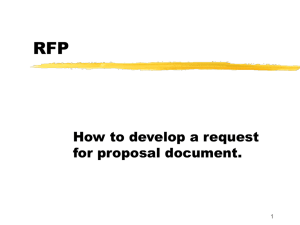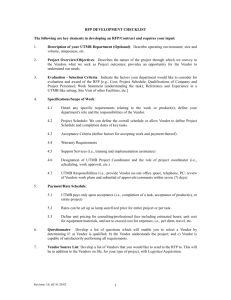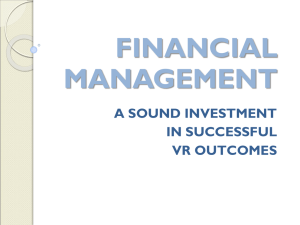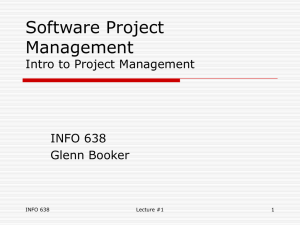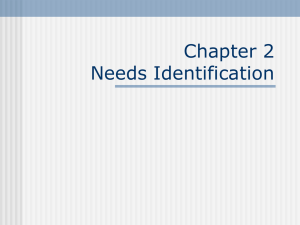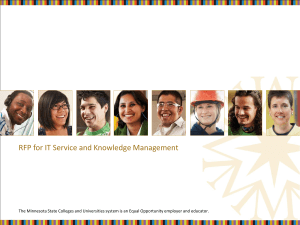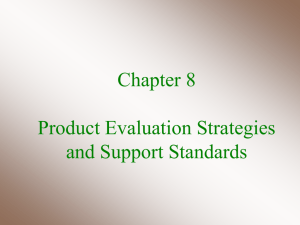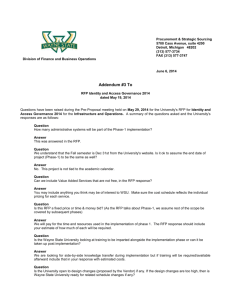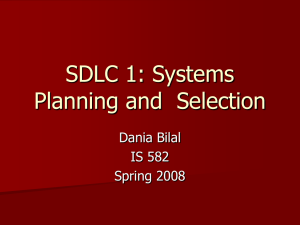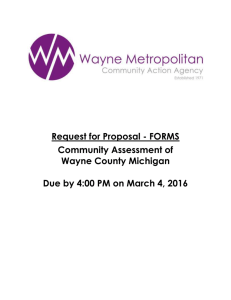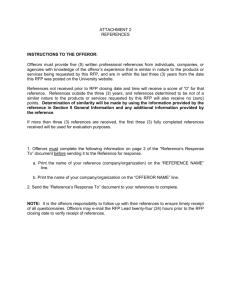what are the 6 steps to select and implement a computer system?
advertisement
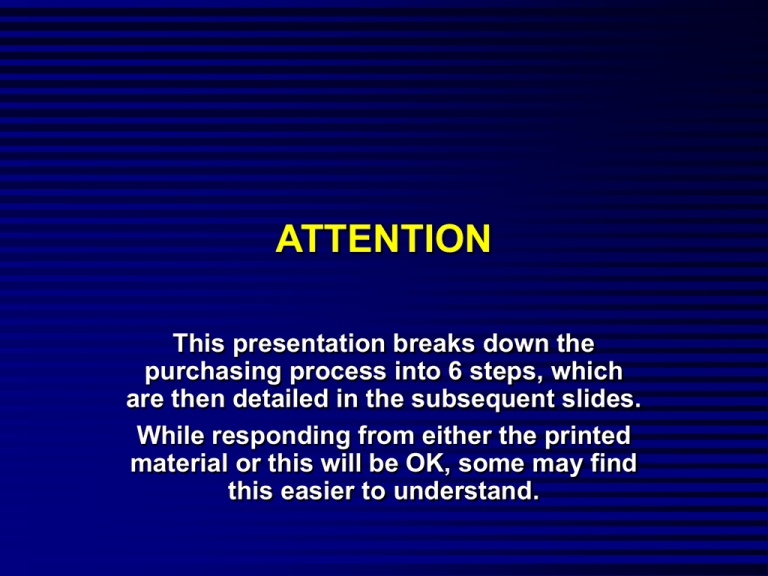
ATTENTION This presentation breaks down the purchasing process into 6 steps, which are then detailed in the subsequent slides. While responding from either the printed material or this will be OK, some may find this easier to understand. WHAT ARE THE 6 STEPS TO SELECT AND IMPLEMENT A COMPUTER SYSTEM? STEP 1. ANALYZING THE CURRENT INFORMATION NEEDS OF THE BUSINESS STEP 2. COLLECT RELEVANT COMPUTER SYSTEMS SALES LITERATURE STEP 3. ESTABLISH COMPUTER SYSTEM REQUIREMENTS STEP 4. REQUESTING PROPOSALS FROM VENDORS STEP 5. EVALUATION VENDOR PROPOSALS STEP 6. CONTRACT PROVISIONS STEP 1. ANALYZING THE CURRENT INFORMATION NEEDS OF THE BUSINESS (2 Parts to this step) Part 1. IDENTIFY INFORMATION NEEDS: Part 2. CREATE A PROPERTY PROFILE Part 1. IDENTIFY INFORMATION NEEDS: (3 components) 1. Compiling samples of all reports presently prepared for management. – – – – – – – – – – Daily operations reports Weekly forecasts Cash flow analysis Labor productivity analysis Departmental analysis Room rate analysis Return on Investment Exception reporting Guest history analysis Future booking reports Part 1. IDENTIFY INFORMATION NEEDS: (3 components) 2. Analyze the purpose, content, and use of these reports.(Flowchart) Part 1. IDENTIFY INFORMATION NEEDS: (3 components) 3. Identify any gaps or improvements that can be made. Part 2. CREATE A PROPERTY PROFILE 1. A property profile is a set of descriptive statistics that allows the comparison of this operation to others to help identify similarities and differences. This information can be used by vendors to establish if existing programs have been used in similar operations and how they have functioned. This information should also include any equipment that is currently in use and if these functions are best integrated into a new system or equally efficient as individual STEP 2. COLLECT RELEVANT COMPUTER SYSTEMS SALES LITERATURE (2 parts) Part 1. SOURCES OF INFORMATION Trade Associations Trade shows have been Visit local vendors Request information from reputable vendor across the country. STEP 2. COLLECT RELEVANT COMPUTER SYSTEMS SALES LITERATURE (2 parts) Part 2. SPECIFIC INFORMATION TO REQUEST – – – – – – – – Hardware documentation Software documentation List of current product users Sample report formats Sample training materials Annual financial statements of the vendor Purchase/lease options User support and maintenance programs. STEP 3. ESTABLISH COMPUTER SYSTEM REQUIREMENTS (4 parts) Part 1. DETERMINE DATA TO PROCESS – – – – Data Identification: Data Collection: Data Entry Data Coding STEP 3. ESTABLISH COMPUTER SYSTEM REQUIREMENTS (4 parts) Part 2. DETERMINE HOW TO PROCESS DATA The way the system is programmed to manipulate the data should be in line with the desires and expectations of management. STEP 3. ESTABLISH COMPUTER SYSTEM REQUIREMENTS (4 parts) Part 3. DETERMINE INFORMATION FORMATS – – – – – Reservation Confirmation Registration cards Guest Folio Billing statements Payroll checks Part 4. Determining the hardware configuration – Stand-Alone – Distributed – Integrated STEP 4. REQUESTING PROPOSALS FROM VENDORS Section 1: Description of business Section 2: Bidding requirements Section 3: Specific Computer Systems Applications Requirements. STEP 5. EVALUATION VENDOR PROPOSALS Multiple rating system Vendors business reputation Comparing Direct, Indirect, and hidden costs of each system. STEP 6. CONTRACT PROVISIONS (3 PARTS) Part 1. GENERAL PROVISION – – – – – – Terms of delivery Terms of payment Survival past delivery Saleable product warranty Catastrophe remedies Provisions for breach of contract STEP 6. CONTRACT PROVISIONS (3 PARTS) Part 2. HARDWARE PROVISIONS – – – – Specifications and performance criteria Delivery, installation, and testing requirements Costs and terms of payment Reliability tolerances Maintenance programs options STEP 6. CONTRACT PROVISIONS (3 PARTS) Part 3. SOFTWARE PROVISIONS – – – – – – – Escrow of source code for performance failures Specifications and performance criteria Delivery, installation, and testing requirements Costs and terms of payment Reliability tolerances Support systems Upgrades and updates REQUEST FOR PROPOSAL (RFP 3 sections) RFP Section 1: Description of business RFP Section 2: Bidding requirements RFP Section 3: Specific Computer Systems Applications Requirements. RFP Section 1: Description of business Property profile Objectives for the computer System Operational requirements for the Computer system Hardware configuration Payment options Future expandability of the system Software descriptions Vendors future responsibilities RFP Section 2: Bidding requirements Standardized response form RFP Section 3: Specific Computer Systems Applications Requirements. Standardized response form for information requested. WHAT ARE THE THREE TYPES OF CONTRACTUAL ARRANGEMENTS LISTED IN THE CHAPTER? SINGLE-VENDOR CONTRACT TWO-VENDOR CONTRACT TURNKEY PACKAGE WHAT ARE THE INSTALLATION FACTORS TRAINING SITE PREPARATION DESIGN OF PRINTED MATERIALS INITIAL ENTRY OF DATABASE ELEMENTS ACCEPTANCE TESTING SYSTEM CONVERSION DOCUMENTATION CONTINGENCY PLANNING VENDOR SUPPORT WHAT IS A MANAGEMENT INFORMATION SYSTEM? A management information system is designed to provide managers with the necessary information to plan, organize, staff, direct, and control operations. Monitor progress of organizational goals Measure performance Identify trends Evaluate alternatives Support decision making Assist in corrective action WHAT IS INFORMATION PROCESSING TECHNOLOGY? Established the communication process in which data are transferred from independent computer systems and physically transformed into the information requested. – – – – – – Reservations POS CAS Energy Management System Payroll Accounting WHO ARE THE MIS MANAGEMENT STAFF AND WHAT FUNCTIONS DO THEY PERFORM? Property systems manager: Department systems supervisor: WHAT IS A MULTI-PROCESSOR ENVIRONMENT? A multi-processor environment results from interfacing independent computer processing units (CPU), enabling them to share data, peripheral devices and operating systems. SYNERGY: The whole is greater than the sum of its parts. The interfaced system has advantages over the "stand alone" systems because: SYSTEMS TESTING: Usually one application is brought on-line at a time and tested. Each module should with other systems and stand alone as individual modules. CONTRACT CONSIDERATIONS: What are the organizations rights to alter the code in the software packages purchased? Can you add code to include a particular interface? Will altering the code change any existing maintenance agreements? To what degree will each vendor involved support the interface? WHAT IS DOWNTIME AND MULTI-TASKING AND HOW DOES IT IMPACT THE ORGANIZATION? DOWNTIME: MULTI-TASKING: WHAT ARE THE THREE TYPE OS MIS SECURITY ENERGY BACKUP SYSTEMS: INFORMATION BACKUP PROCEDURES: – – – – REDUNDANT COPY DUPLICATE COPY HARD COPY FAULT-TOLERANT PROCESSING INFORMATION PROTECTION: Keeping information out of the wrong hands is an important consideration. FRAUD Functional division of duties. Recovery. Avoid tampering. Unauthorized access prevention. Detection and correction.
